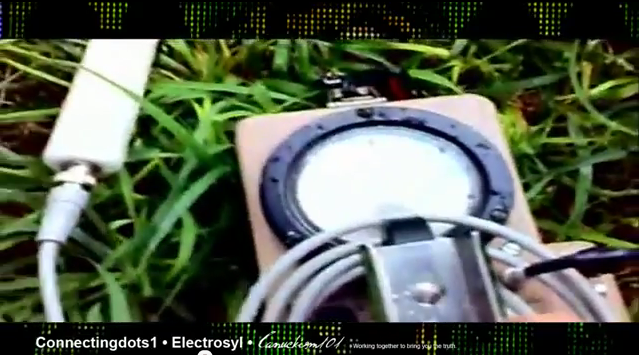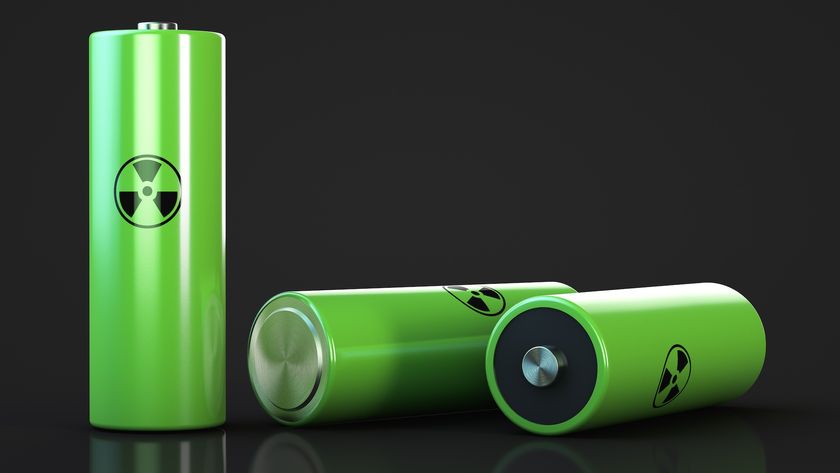Radioactive Rain Across the US Is Natural

There appears to be radiation literally raining down upon Earth. In several new YouTube videos shot in the United States and Canada, radiation-detecting Geiger counters are shown buzzing at an alarming rate when aimed at wet grass and puddles shortly after it has rained.
Following a recent downpour in Toronto, one man detected thousands of radiation particles per minute in the area around his house, telling YouTube viewers, "Where this is coming from, I don't know. Fukushima? They're spiking the clouds with radioactive isotopes to do climate modification? I have no idea, but this is ridiculous."
Is there cause for alarm? In fact, radioactive rain is not a new health threat or evidence of a cover-up by the nuclear industry, but rather is indicative of just how many naturally occurring radioactive particles there are in Earth's atmosphere.
"What they are detecting is most likely natural radioactivity that gets washed down in rainfall from the air," said Ward Whicker, professor emeritus in the Department of Environmental and Radiological Health Sciences at Colorado State University and author of several books on the environmental impact of radiation. "Fundamentally, most people have very little appreciation of the magnitude of natural radiation that we've always lived with." [Easy Answers to the Top 5 Science Questions Kids Ask]
In particular, there is a large amount of uranium present in soil and rock, he said. With a half-life of 4.5 billion years — the time it takes for half of a given sample to decay — the uranium inside Earth slowly progresses through a series of manifestations as different radioactive isotopes (variants of a particular chemical element that have different numbers of neutrons), and eventually becomes radon gas. This gas seeps out of the soil and rock and into the atmosphere.
Radon is short-lived, with a half-life less than four days. As it decays, transforming into less-radioactive elements, it emits alpha and beta radiation. Rain washes these particles down to the ground. "So, even if you have a modestly light rainfall for a short period of time, with a Geiger counter, you can easily measure the radioactivity that has been deposited by the rain," Whicker told Life's Little Mysteries.
While he could not be sure of the source of any specific example of radioactive rain that was recently caught on video, not being on the scene, Whicker said the levels shown do not seem to be abnormal, and there is no reason to connect the radiation to Fukushima.
Sign up for the Live Science daily newsletter now
Get the world’s most fascinating discoveries delivered straight to your inbox.
It's normal to experience close to 1 million radiation absorption events in your body every minute from natural sources of radiation, including cosmic rays from space and radon gas seeping up from uranium and thorium hordes within the Earth. "This is natural radioactivity that has always been present since the Earth formed," Whicker said.
Natural or otherwise, it is nonetheless important to minimize your exposure to radon gas, which tends to get trapped in basements and poorly ventilated homes. Radon decays into lead-210 and polonium-210, both of which get stuck in the lungs when inhaled and, by battering cells with a constant stream of radiation, increase one's chance of developing lung cancer. Radon gas exposure causes around 21,000 lung cancer deaths each year in the United States, according to the Environmental Protection Agency — second only to cigarette smoking.
The EPA recommends testing your home for radon, either by seeking out a professional or installing a radon test kit, which can be purchased online.
Follow Natalie Wolchover on Twitter @nattyover. Follow Life's Little Mysteries on Twitter @llmysteries, then join us on Facebook.
Natalie Wolchover was a staff writer for Live Science from 2010 to 2012 and is currently a senior physics writer and editor for Quanta Magazine. She holds a bachelor's degree in physics from Tufts University and has studied physics at the University of California, Berkeley. Along with the staff of Quanta, Wolchover won the 2022 Pulitzer Prize for explanatory writing for her work on the building of the James Webb Space Telescope. Her work has also appeared in the The Best American Science and Nature Writing and The Best Writing on Mathematics, Nature, The New Yorker and Popular Science. She was the 2016 winner of the Evert Clark/Seth Payne Award, an annual prize for young science journalists, as well as the winner of the 2017 Science Communication Award for the American Institute of Physics.












